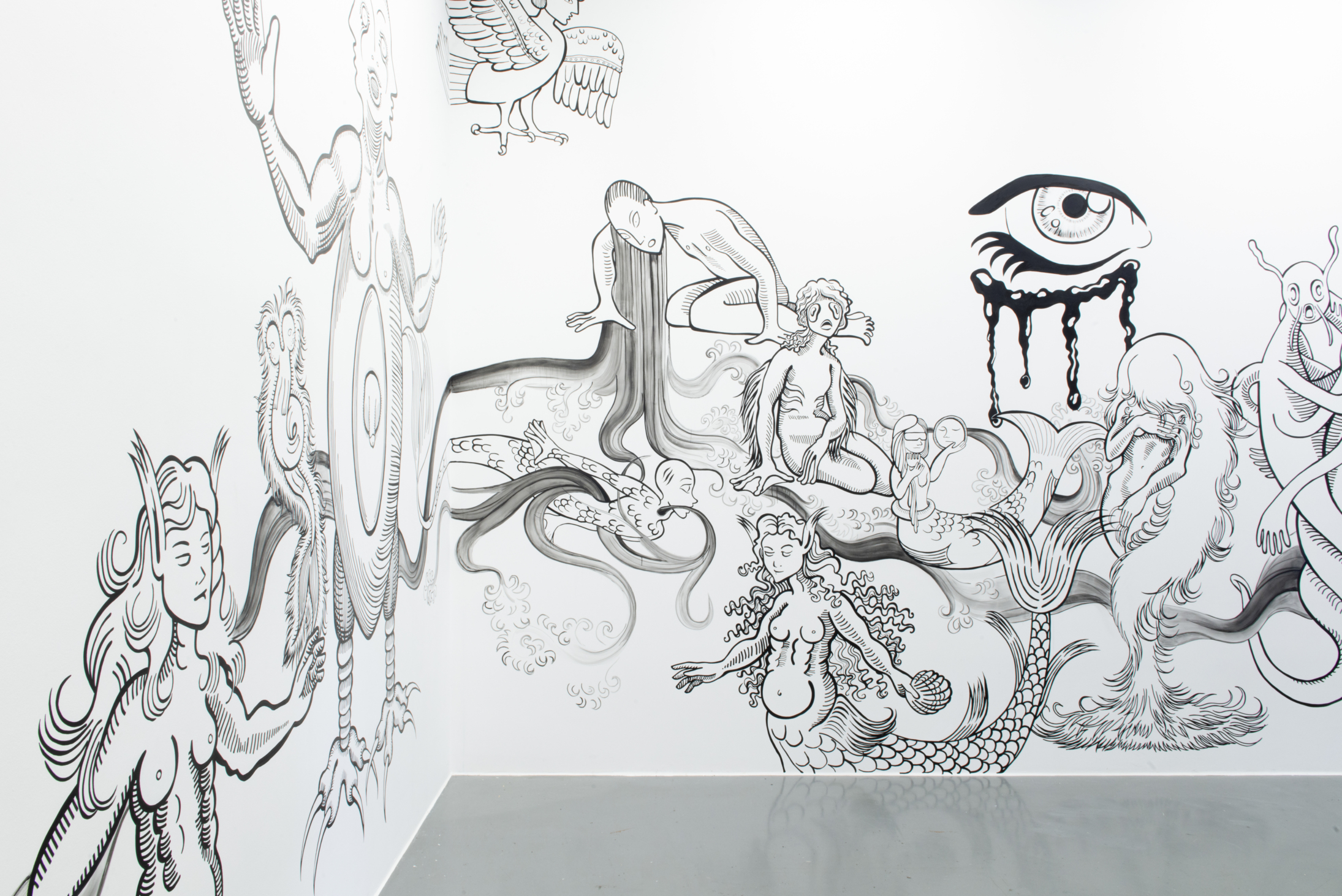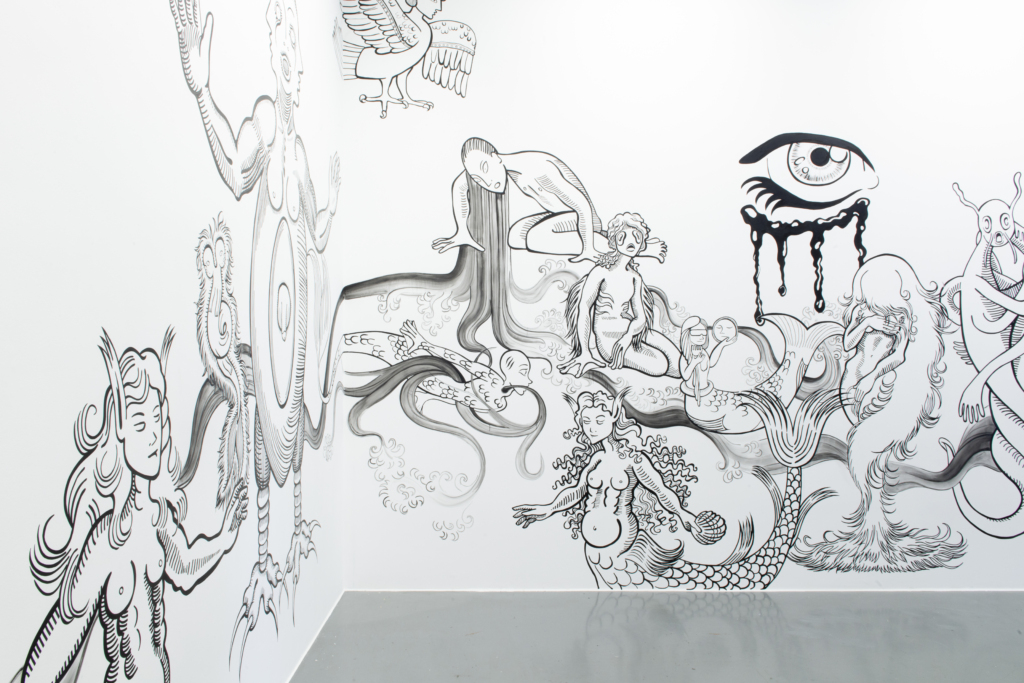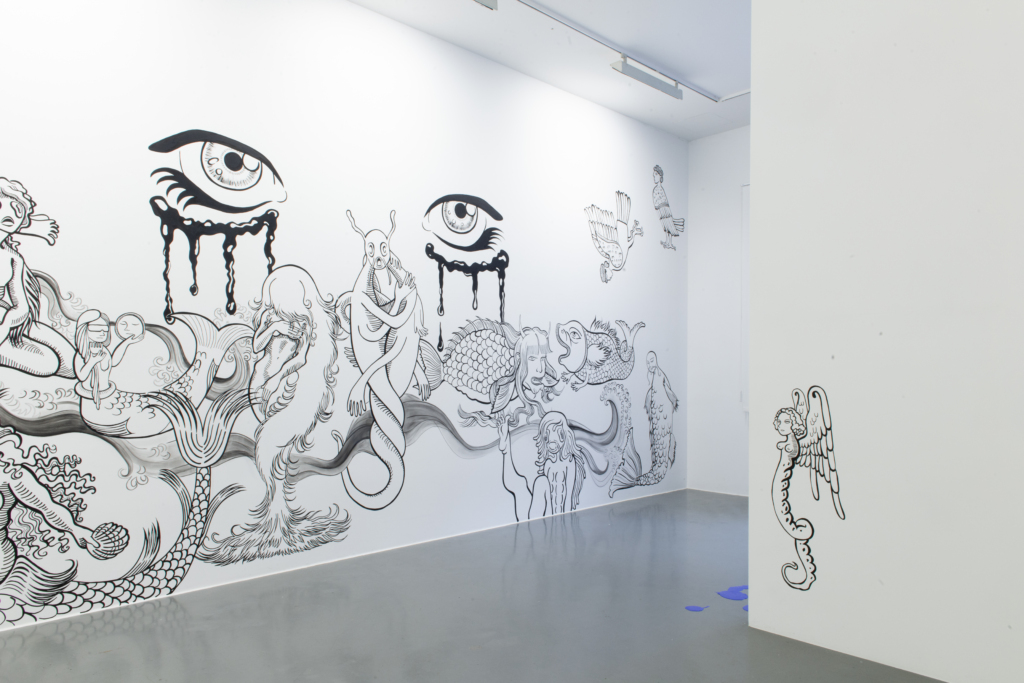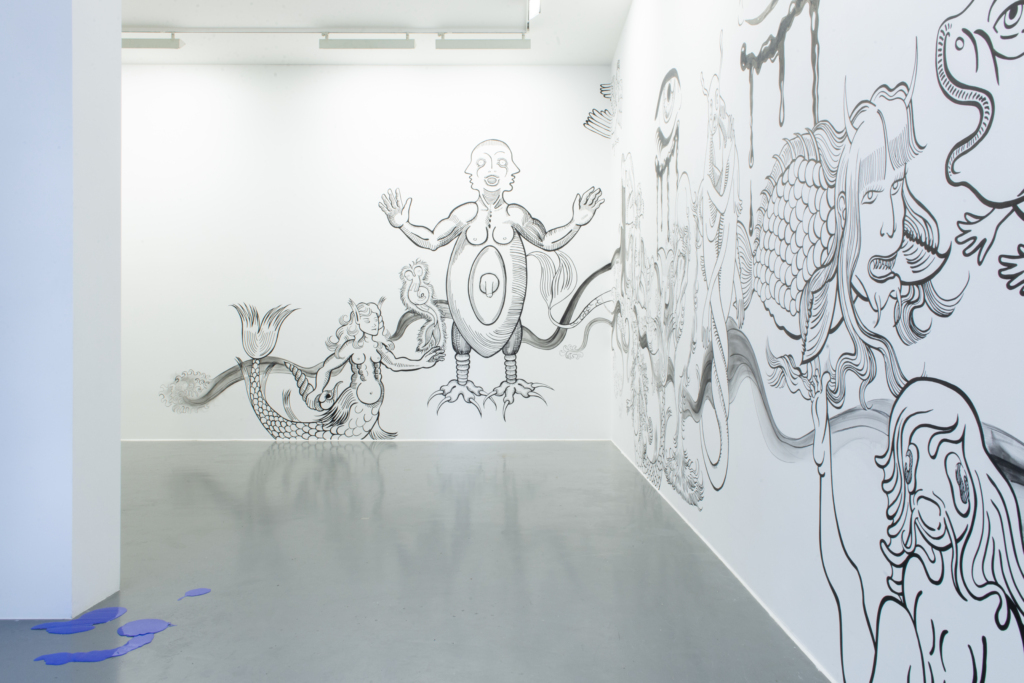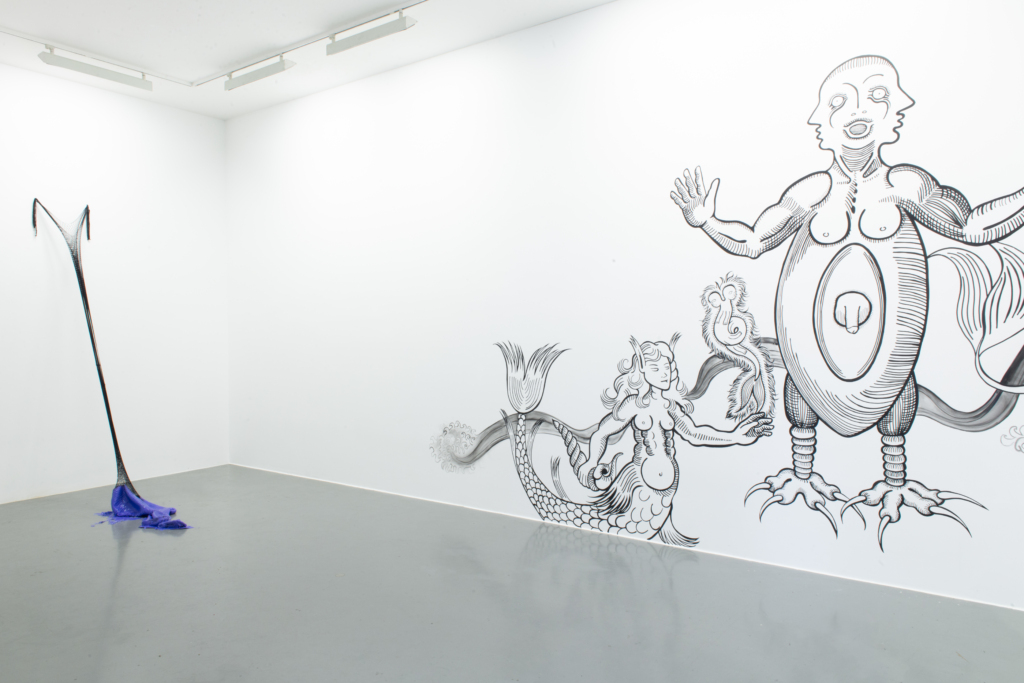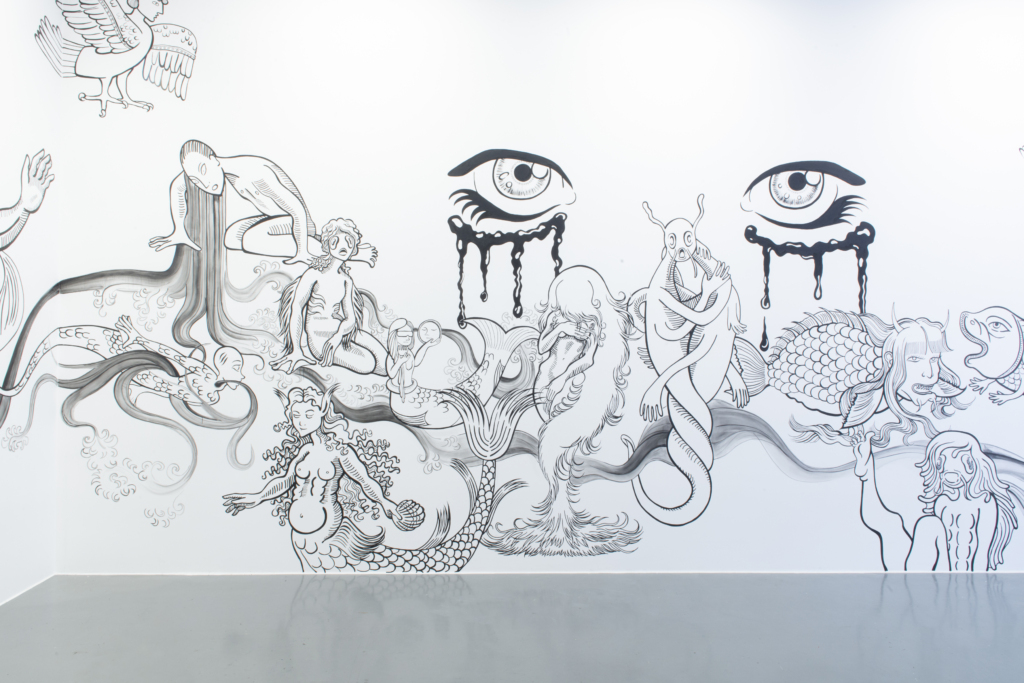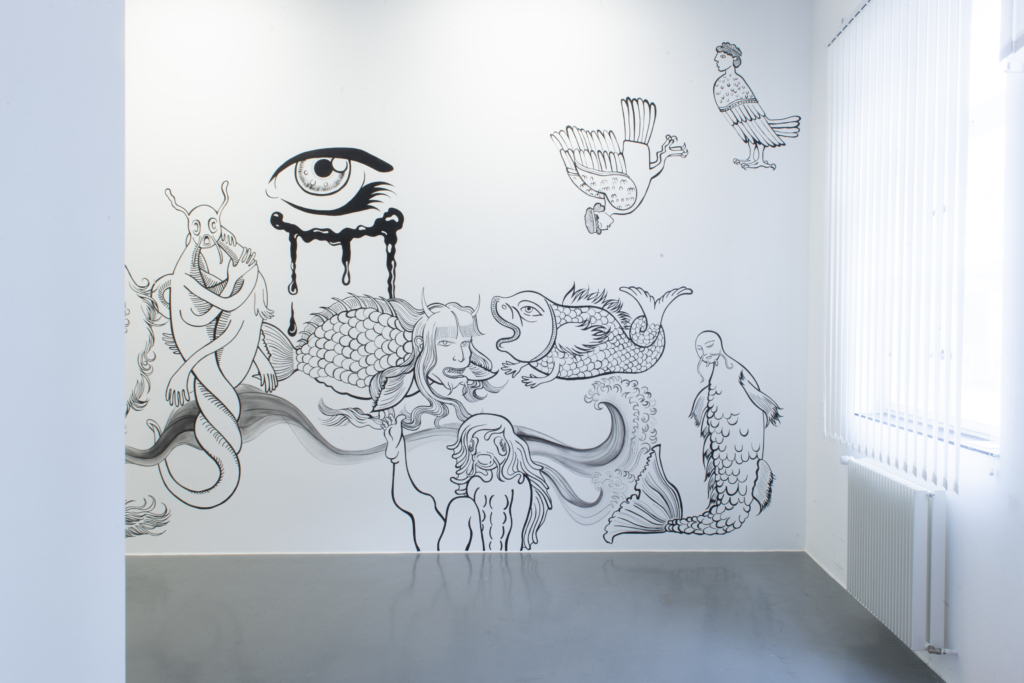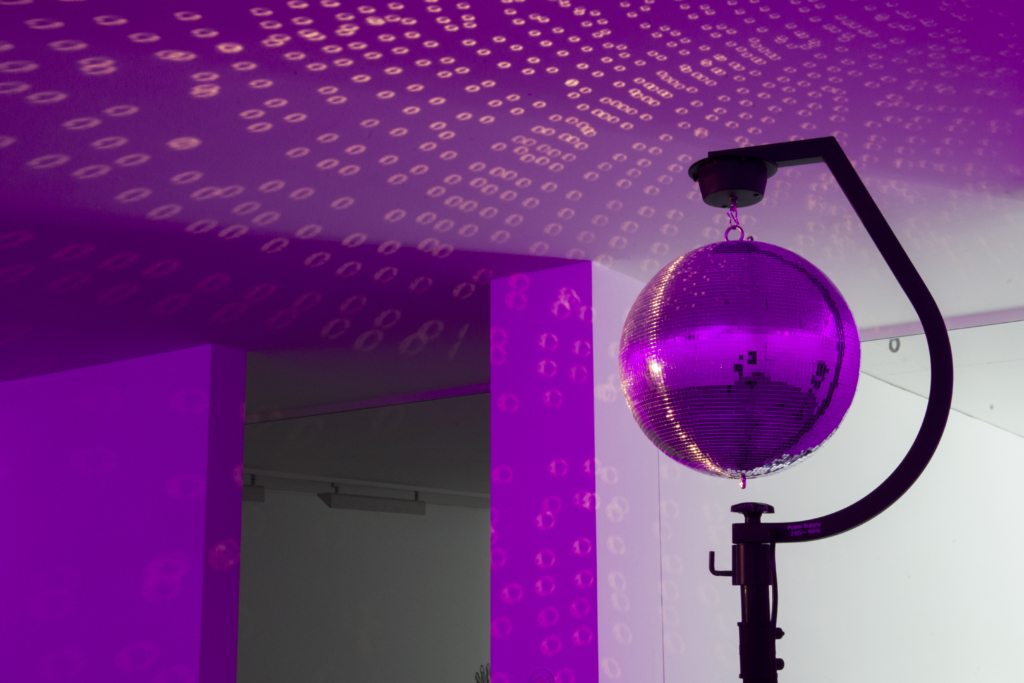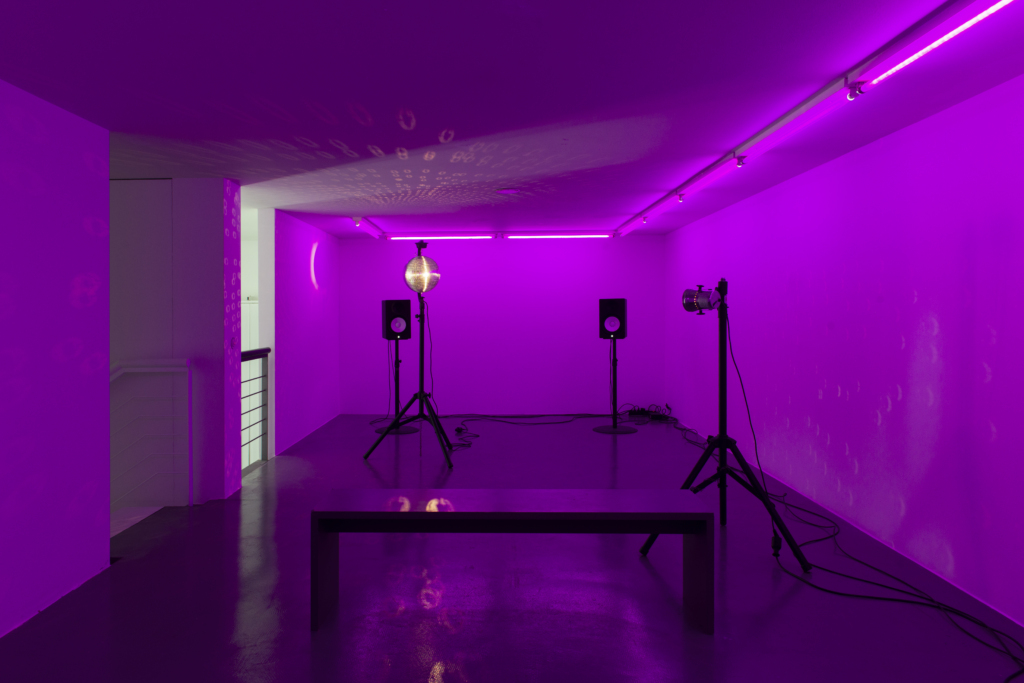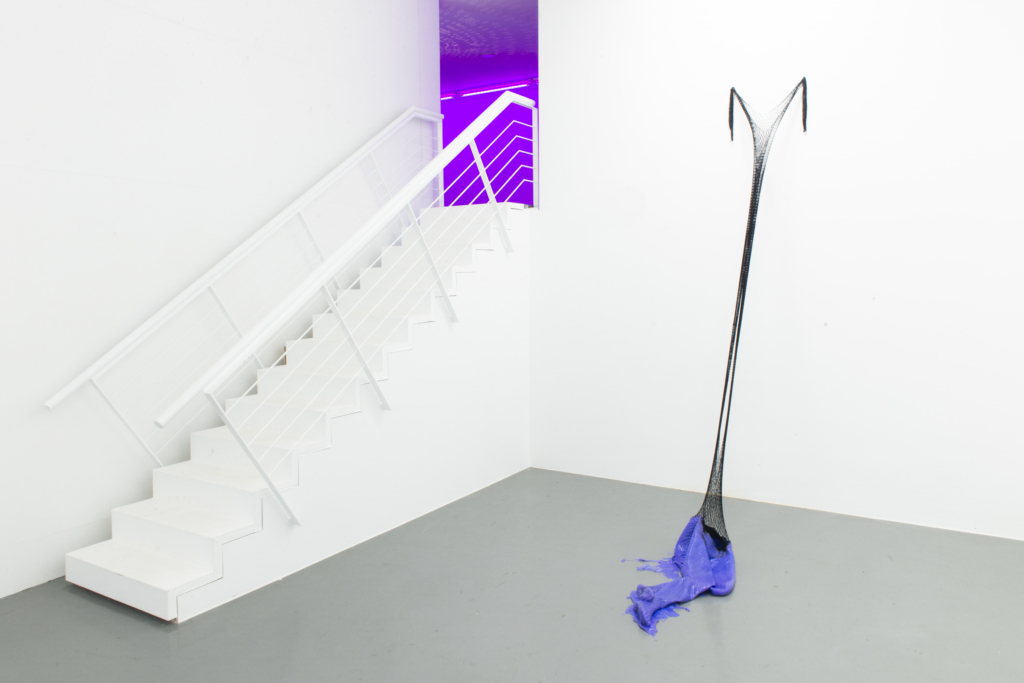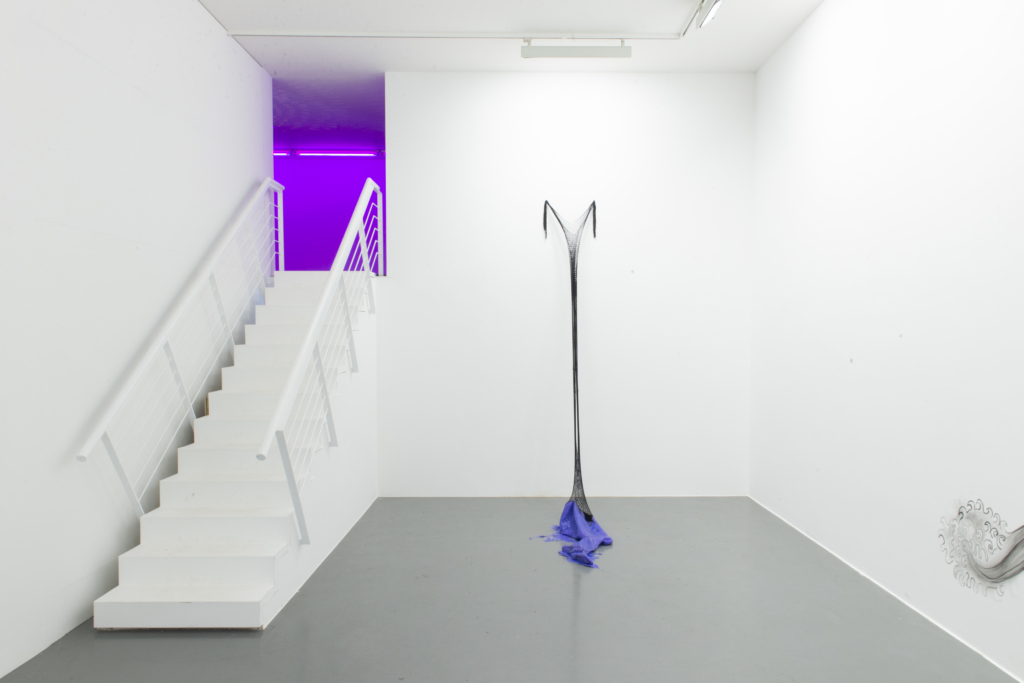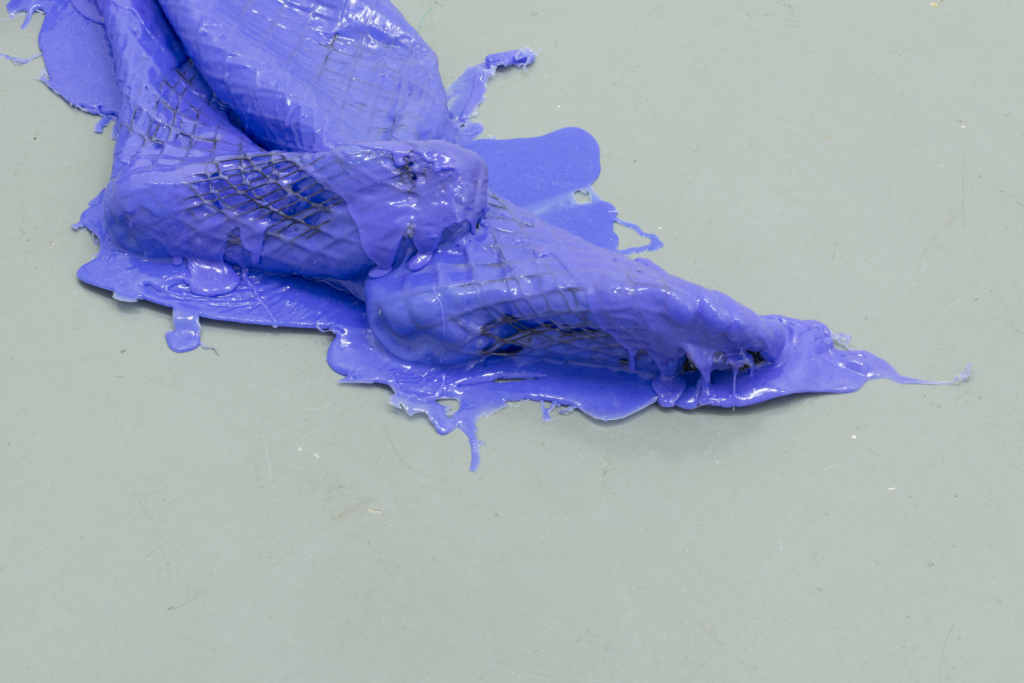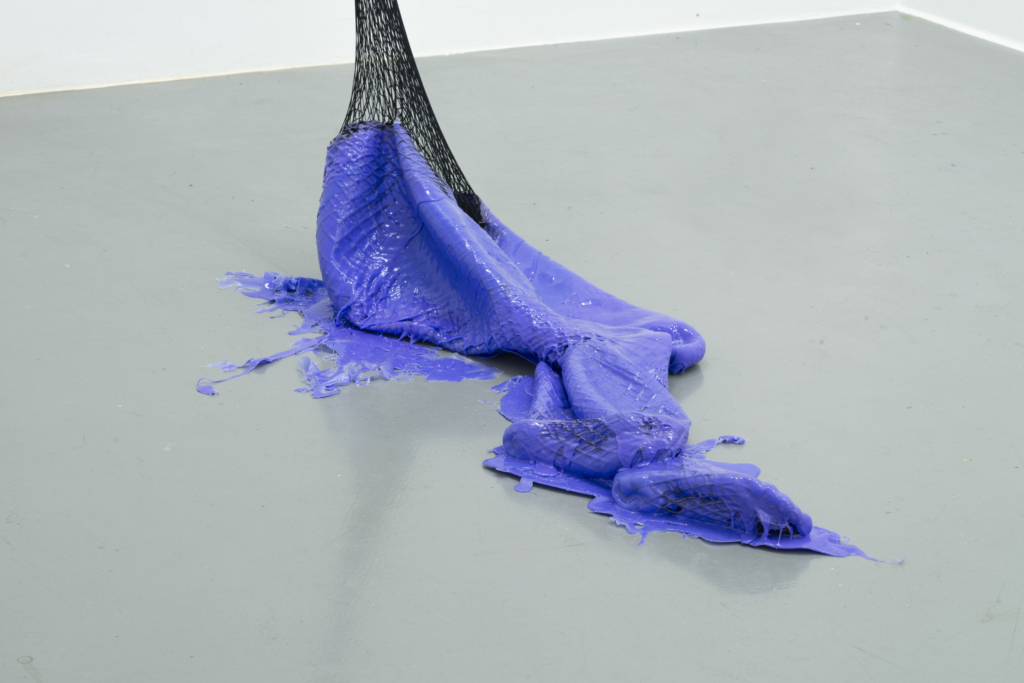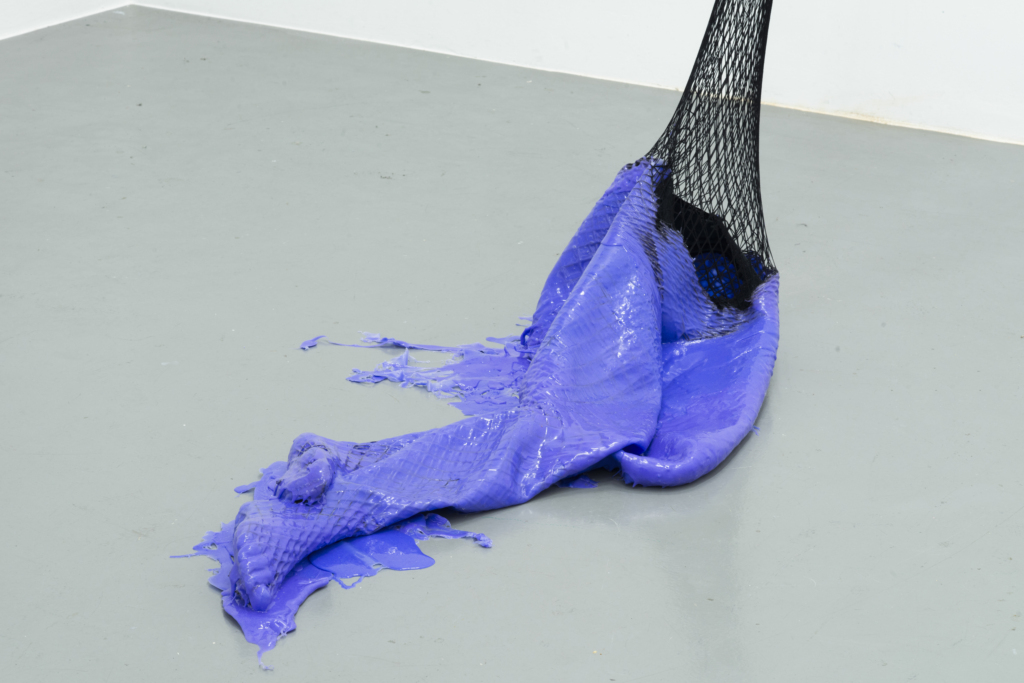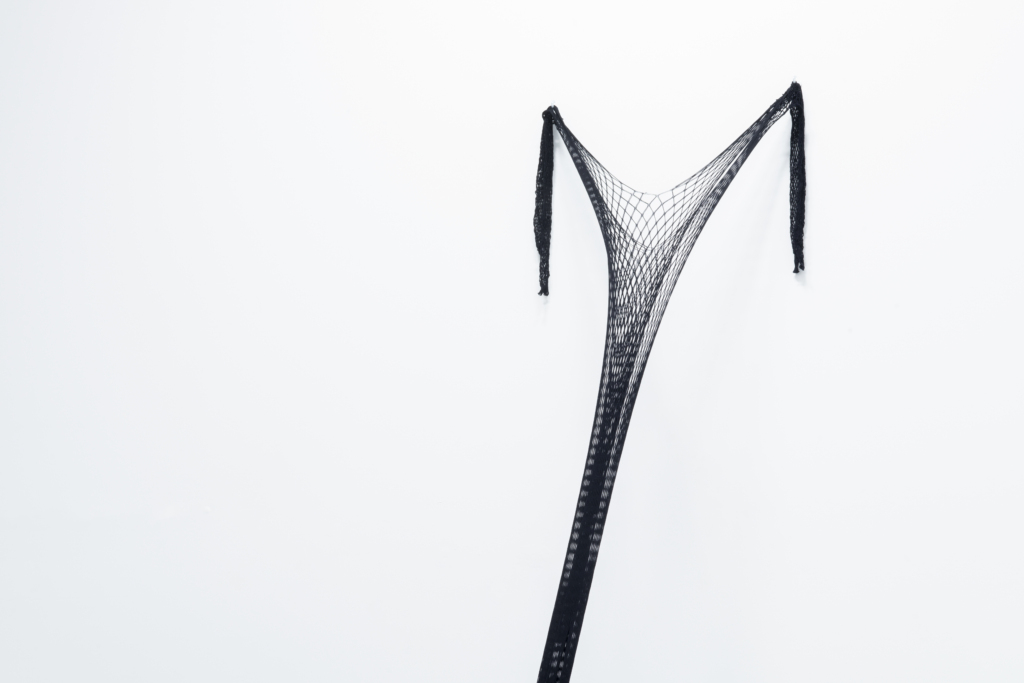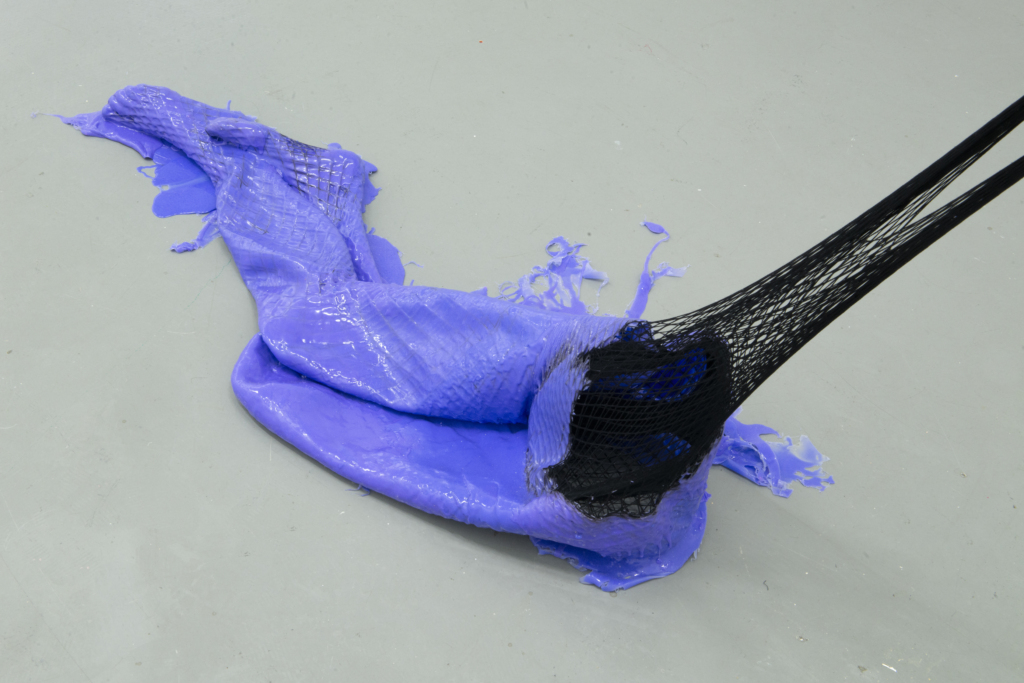Tamara Goehringer
HEAVY WATER (floated through her winters and summers)
A mythical creature, half woman, half fish in form. Unseen, yet widely known in the myths of the mermaid, siren, or water nymph. The water woman lives in the deep. And she waits for redemption. Kunstverein Friedrichshafen presents the exhibition HEAVY WATER (floated through her winters and her summers), featuring four new artistic productions by Tamara Goehringer.
I love the water, its dense transparency, the green in the water and the speechless creatures (and soon I too will be speechless!), my hair among them, in it, the just water, the indifferent mirror that forbids me to see you otherwise. The wet boundary between me and myself…
Ingeborg Bachmann, Undine geht…, 1961
The quote from Ingeborg Bachmann’s monologue Undine geht… responds in a mystical and multilayered way to the paradoxical relationship between the water spirit Undine and the human world. On the one hand, she longs for love, for humanity on the shore, for the overcoming of separate realms. At the same time, she feels betrayed, abandoned, and trapped there. Her response possesses a “dense transparency” that shifts, like her reflection in the water, between self-realization and self-effacement. Water spirits like Undine embody a strange, deeply submerged, and subconscious entity. The motif of the mermaid has fascinated since the sirens in Homer’s Odyssey, and continues to be treated in contradictory ways: as hypersexualized, erotic danger, as a spirit to be rescued, and simultaneously, in Bachmann’s version, as an agent of liberation.
A defining trait of the mermaid is her need for redemption. She is often portrayed as a cursed, soulless being, who can only be freed from her fate through the love of a man. If that love is not fulfilled, she must return to the water, must dissolve. In the tragedy of her death and her return, Tamara Goehringer observes something empowering: the water spirit as a being between elements; a being that has the power to unite supposed dualisms – good and evil, water and air, darkness and light, woman and man – within itself. Goehringer expresses this observation through a wall painting spanning two walls. She employs this primal, ephemeral form of representation that is inseparably connected to the surface, to transform the existing stories and myths of the water woman and her deaths into a contemporary fairy tale. A being that unites opposites, a hybrid of a possible future. This story does not unfold linearly but appears like drops in a sea of images. It speaks of magical underwater worlds and dangerous depths. Bodies of water that move between genders and resist any clear definition speak of otherness, of semi-(non)presence. These living spirits in the water tear down the walls of reality. They reveal the possibility of the existence of something alternative, buried deep within the lake. Thus, reality and fiction, sexuality and detachment, reflection and the subconscious, erotic desire versus seductive danger all begin to blur.
Through performance, video, drawing, and sculpture, Goehringer interrogates the relationships between language, text, form, and social patterns, as well as norms in everyday environments. Her theoretical research incorporates both contemporary pop cultures and ancient myths, crafting a specific narrative that, for the artist, opens up conceptual boundaries largely through reference.
In her work, Goehringer also explores bodily limits, the distinctions between psychological and physical existences, and deliberately blurs them. With the sculpture obsesión, she addresses these very questions. Silicone envelops the netted human figure with a second, scale-like skin that can no longer be separated from it. Here, Goehringer references the bronze figure Den lille Havfrue (The Little Mermaid) by sculptor Edvard Eriksen in Copenhagen. At the same time, the sculpture alludes to the omnipresent, consumer-driven pop culture in which identities, gender roles, and affiliations are layered like skins. The work’s title is a reference to the Bachata band Aventura’s song of the same name. This and all other artwork titles in the exhibition are audible in Goehringer’s sound piece on the upper floor. A beckoning song echoes throughout the exhibition space. It seems to come from the lake and sounds distorted. The sound piece say my name (it’s gonna be lonely) drifts through the rooms, at times as quiet as a whisper, at others resounding loudly. say my name (it’s gonna be lonely) is an echo of 41 pop songs from the past decades.
Goehringer whispers, sings, and reads selected lyrics from these songs, interweaving them with her theoretical reflections. In doing so, she approaches a siren-like voice that both captivates and repels the listener. Whether it is one siren, two as in Homer’s Odyssey, or an entire swarm, is not always clear. With rhythms and artificially generated effects, the listener submerges in this sea of language and words. The pop songs feed the myth of the seductive (water)woman who appears from nowhere and vanishes again. She poses a danger to humans, especially men with whom she forms relationships. Light refracts in the thousands of mirrors of a disco ball and casts small reflections on the wall. In a pink daze, they fill the room with a sense of weightlessness, cloaking it in shimmering, glittering light: underwater.
In Bachmann’s Undine geht…, Undine is not only abandoned – she emancipates herself precisely through that abandonment. “I will never return, never say yes again, and you and yes.” It is a liberation from dominant societal structures, a rebellion against her gender-assigned roles. Bachmann integrates a key element into the familiar Undine narrative: the impossibility of fulfilling love between water spirit and man is not tragic here, but rather a source of independence. Through her reflection in the water, the mermaid comes to know herself – and liberates herself. Unda(Latin: wave) – this is how Undine’s departure in Bachmann’s text feels; she takes back her weakness, she rises up and: she leaves.
Curated by and with a text by: Marlene A. Schenk.
